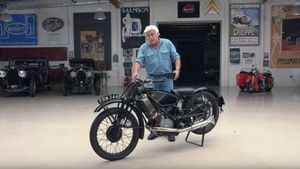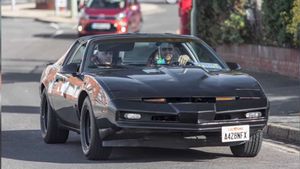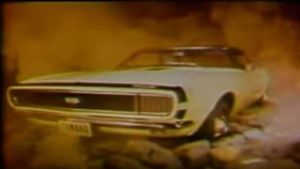
Numerous engines and bodystyles mean there’s a W123 for everyone, whether it’s the super-stylish coupe, the ultra-practical estate or the more affordable saloon
Prices
• Project £1000-2000 • Good £5000-8500 • Concours £7000-15,000 •
Practicality ★★★★
Running costs ★★
Spares ★★★
DIY Friendly ★★★
Investment ★★★★
Desirability ★★★
When it comes to cars engineered to last, few companies have been as consistent as Mercedes-Benz. Back in the 1970s its advertising slogan was ‘Engineered like no other car in the world’ and it was a claim that withstood the closest of scrutiny. You’ve only got to spend the briefest of periods with a W123 for example, and you’ll soon see why Mercedes charged a hefty premium over more mainstream rivals.
See more...
A Mercedes from the days when it was ruled by engineers rather than beancounters is something to savour, but with the W123 now getting on, many are getting tatty, with repair costs potentially prohibitively high. But buy a good one and look after it, and you’ll never need to replace it because a cherished W123 will rack up inter-galactic mileages without murmur.
Your AutoClassics Mercedes-Benz W123 inspection checklist
Engine
With 12 different in-line engines throughout its lifetime, including petrol and diesel units, with four, five or six cylinders, there’s plenty of choice, as you can see in the table below.

The oil should have been changed every 4000 miles, and the timing chain every 60,000 miles; failure to do so means the chain can fail, wrecking the engine. A decent engine rebuild is expensive and decent used engines are scarce.
The plastic and aluminium radiators fur up; you may get away with just flushing it through but if a new one is required, aftermarket items are costly and genuine Behr units are even more expensive. What any previous owner should have done is maintain anti-freeze levels on the 280 straight-six with its alloy cylinder head. While head gasket failures aren’t rare on petrol powerplants, this 2746cc unit is the most prone of all – and rebuilding a 280 head costs big money.
The 250’s four-choke carb is a pain to set up properly and despite a reputation for indestructability, the four-cylinder engines typically last just 150,000 miles between rebuilds; six-pot editions will do 200,000+ miles. Any W123 engine should be quiet and smoke-free; the first sign of wear is usually worn valve stem seals, leading to smoking when applying the throttle after the over-run.
Beware of aftermarket exhausts, as they don’t last as long, tend to sound tinny and they’re often a nightmare to fit. A genuine Eberspächer system costs plenty though. Also ensure that Beru or Bosch lead sets are fitted; nothing else lasts as well.
Any W123 engine is straightforward enough to rebuild on a DIY basis, but the overhead-cam 280 unit is complicated (and costly) to overhaul, while the fuel injection systems also need expert attention.
Gearbox
Most W123s came with a four-speed gearbox, manual or auto, although some facelifted (post-June 1980) cars got a five-speed manual. All these transmissions are extremely long-lived, so any whining or signs of vagueness/jumping out of gear means the car has probably been to the moon and back, and the chances are it hasn’t been serviced properly either.
The rest of the transmission is very strong, which is just as well because a rebuilt diff is big money and so is an OE clutch kit. And once again, it’s always best to stick with OE parts.
Suspension and brakes
Power assistance was optional for the recirculating-ball steering until 1982; then it became standard, although most cars had it from 1978. Make sure there’s no play because if all the adjustment has been taken up, a costly new box will be required.
Any car on its original rubber bushes will need a fresh set, while rot is common in the bottom spring mounts for the rear trailing arms. Repairs mean removing much of the rear suspension, complete with the hubs. To remove the hubs you’ll need a special tool to remove the rear wheelbearings, so it’s a job for specialists only. Estates came with self-levelling suspension at the rear; if this fails it’s very expensive to put right.
All W123s feature servo-assisted discs all round. It’s a straightforward system that shouldn’t give problems, although calipers can seize, leading to a soft pedal and a lack of reassurance when slowing. Master cylinders can also fail but replacements aren’t expensive.
Bodywork
The W123 was fairly well protected from the elements, while the paintwork was unsurpassed. But pre-1981 cars can rust badly and even later W123s are likely to have some corrosion. Panel availability is good, although some pattern stuff is ropey so it’s best to stick with genuine parts, which cost far more.
The areas most likely to give problems include the battery tray, spare wheel well and jacking points. In the case of the former, if left to corrode it’ll take the bulkhead with it. Also check behind the headlights, around the front suspension mounts, the inner front wings and in the rear wheelarches. On estates the tailgates rot and so do the fuel tanks; replacements are unavailable.
Bumpers corrode badly, from the inside out, while cars with a factory-fitted sliding sunroof (which is most of them) need particular scrutiny as the roofs can leak and the drain tubes rust, allowing water to be chanelled straight into the footwells. Repairs are involved and costly.
Interior
There were five different trim finishes; MB Tex (a tough leather-look vinyl), velour, leather, half-cloth (mixed with vinyl) or full cloth, while on coupés there were standard or lowered seats. With each finish offered in a variety of colours, tracking down matching replacement used trim is virtually impossible. Interiors get damp because of failed windscreen seals and the complex front seats can collapse, especially the driver’s.
While many W123s didn’t feature a lot of kit, what is fitted tends to be reliable. Many cars have electric windows and a few have air-con, while most feature central locking. This latter system is vacuum-operated and it’s leak-prone. On coupés it also locks the front seats in place; an automatic MoT failure beckons if the system packs in. Tracking down faults can be time-consuming, although parts costs tend to be low.
History
- 1976: W123 saloon debuts in 200D, 220D, 240D and 300D diesel forms, or there are 200, 230, 250, 280 and 280E petrol editions.
- 1977: A coupé arrives in 230C, 280C, 280CE and 300CD forms.
- 1978: An estate appears, in 230T, 250T, 280TE and 240TD guises. Crayford reveals a convertible W123 coupé. 12 are made.
- 1979: The 220D dies and the eight-seater 250, 240D and 300D go on sale.
- 1980: A facelift brings a new (M102) engine, better rustproofing, wheelarch liners and an ABS option. The 230C, 280C and 230T die; the 200T and 300TD debut.
- 1981: The turbocharged 300CD is introduced for the US.
- 1982: There’s now a five-speed manual option, PAS becomes standard, new all-cloth seats improve rear leg room and the 250T is dropped.
- 1985: The W124 replaces the W123.
AutoClassics say…
Few classics are as superbly engineered as the W123, and there are some magnificent examples out there – but many cars have been run into the ground. The cost of genuine parts has risen sharply in recent years, and buying pattern items tends to be a false economy while used components are also scarce. Serious structural faults are becoming common, while major items that never used to fail, are now beginning to need urgent attention – things like diffs, engines, gearboxes, and driveshafts.
Most sought after of all W123s is the coupé, which represents less then 5% of production. When new it was much more costly than the saloon, and classic values now reflect this – and so do restoration costs. The key is to buy on condition rather than specification as rebuilds are very expensive.
If you take the plunge go for a post-1980 facelifted car as these featured more efficient engines and better rustproofing. With taller gear ratios, cruising is more relaxed and economy is better too. Collectors want 280s, diesels and 200s are generally shunned while the 230 and 230E provides a good usable classic that’s reasonably perky but not too thirsty.



